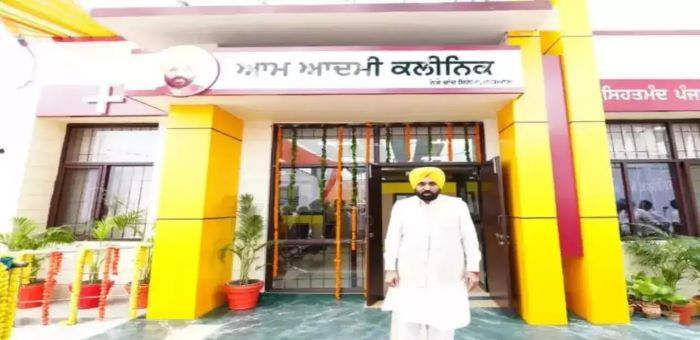 A glaring contradiction exists in Punjab’s healthcare system: while the government promotes public healthcare initiatives and promises quality treatment for all citizens, political leaders and senior officials consistently turn to private hospitals when they need medical care. This disparity has become increasingly evident and raises serious questions about the state’s commitment to improving its government healthcare infrastructure.
A glaring contradiction exists in Punjab’s healthcare system: while the government promotes public healthcare initiatives and promises quality treatment for all citizens, political leaders and senior officials consistently turn to private hospitals when they need medical care. This disparity has become increasingly evident and raises serious questions about the state’s commitment to improving its government healthcare infrastructure.
Leaders Lead by Example – In the Wrong Direction
The most recent example of this trend was when Punjab Chief Minister Bhagwant Mann was treated at Fortis Mohali, a premium private hospital, for exhaustion and low heart rate issues. Despite heading a government that has launched ambitious healthcare schemes, including making Punjab the first state to provide cashless treatment up to Rs 10 lakh for all families, the CM himself opted for private healthcare when his health was at stake. This pattern isn’t unique to Mann. Across political parties and administrative levels, leaders routinely bypass government hospitals in favor of private facilities in cities like Chandigarh, Delhi, or even abroad. The message this sends is clear: if those responsible for running government hospitals don’t trust them with their own health, why should ordinary citizens?
The Healthcare Hypocrisy
The contradiction becomes particularly stark when considering Punjab’s healthcare initiatives. The state government has been expanding Aam Aadmi Clinics and implementing various schemes to improve public healthcare access. Officials regularly inaugurate new government medical facilities and praise the quality of care available to the public. Yet when medical emergencies arise, these same officials head straight to private hospitals. This creates a problematic two-tier system where political rhetoric promotes government healthcare while personal choices reveal a lack of confidence in these very institutions. The wealthy and powerful, including those who control healthcare budgets and policies, have the option to seek premium private care, while ordinary citizens must rely on often under-resourced government facilities.
The Real Impact on Public Healthcare
When leaders don’t use government hospitals, it removes a crucial accountability mechanism. If Chief Ministers, MLAs, and senior bureaucrats had to depend on government healthcare, there would likely be immediate improvements in infrastructure, staffing, and quality of care. Their personal stake in the system would drive better resource allocation and more urgent reforms.
Instead, the current system allows decision-makers to remain disconnected from the ground realities of government healthcare. They can make policy decisions without experiencing the consequences firsthand – the long waiting times, shortage of specialists, outdated equipment, and inadequate facilities that ordinary citizens face daily.
A Question of Leadership and Commitment
The healthcare choices of Punjab’s leaders ultimately reflect their true assessment of the government healthcare system they oversee. While they may publicly defend and promote government hospitals, their private actions suggest a different reality. This undermines public confidence and perpetuates a system where quality healthcare remains a privilege rather than a right.
True healthcare reform in Punjab may only come when those in power have no choice but to use the same facilities they expect their constituents to rely on. Until then, the gap between political promises and personal choices will continue to highlight the inadequacies of Punjab’s public healthcare system.